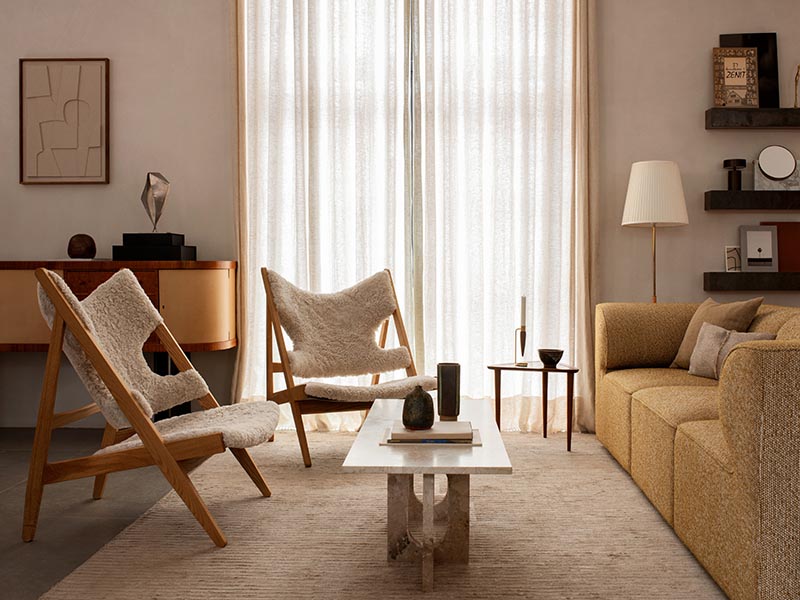Overview
Defined by an exposed, triangular construction, a gently curved seat and back ideally pitched for relaxation, and distinctive cut-outs for resting the elbows when reading, the Knitting Chair affirmed Kofod-Larsen’s reputation as a master of proportion and unexpected, sculptural form. The Knitting Chair is beautiful from every angle, making it easy to place anywhere in a room. Given the chair’s enveloping comfort, it has a relatively small footprint, which makes it an easy fit even in compact interiors.
The design also stands out on comfort – the result of Kofod-Larsen’s constant care to ensure ideal angles and lumbar support. The clean, sculptural lines achieved through the designer’s close work with joiners – and the high-end, natural materials make for an unforgettable, conversation-sparking silhouette. “Ib’s furniture was rooted in reality,” says the designer’s son. “He took a lot of pride in his work, and was iterative in the design process, working closely with his manufacturers to get every detail just right. His hope was to create design that would endure, both functionally and aesthetically.”
Audo Copenhagen's philosophy is to produce high quality design pieces with a modern, soft minimalist look.
Knitting Chair, Walnut, Sheepskin, by Ib Kofod-Larsen for Audo Copenhagen
- Classic Scandinavian design
- Walnut, Plywood, Sheepskin Skandilock Curly 17 mm Cork 19
- W 28.1" x H 35.7" x D 26.3", Seat height 11.8"
- Made in Lithuania




Specifications
- Care
-
- SHIPPING DIMENSIONS
- 1 box 37.4"x31.5"x29.5"
- Weight
- 24.3 lbs
- MADE IN
- Lithuania
-

- DIMENSIONS
- W 28.1" D 26.3" H 35.7" Seat H 11.8"
-

Designer

Danish-born architect and furniture designer Ib Kofod-Larsen (1921–2003) earned his architecture degree from the Royal Danish Academy in Copenhagen, opening his own studio in Copenhagen in 1948. A prominent figure in Danish Modernism alongside such masters as Kaare Klint, Hans J. Wegner, Børge Mogensen, Finn Juhl, and Nanna Ditzel, Kofod-Larsen viewed Scandinavian design not as a regional phenomenon but as part of international modernism. He designed for several leading midcentury manufacturers, both in Denmark and abroad. Larsen's great success internationally, placed him as the best-selling Danish architect in the US in the 50s, working with furniture manufacturers in Germany, Sweden, Japan, the US, and the UK, and exhibiting throughout Europe and the US. Kofod-Larsen frequently worked with resplendent woods, such as teak and rosewood, including rich leathers. Clean, sculptural lines characterize much of his pristine work. In 2003, Kofod-Larsen passed away and the designer's pieces have become collector items, due to his undeniable talent for honoring the innate qualities of his carefully chosen materials.

 @DESIGNQUARTERS
@DESIGNQUARTERS